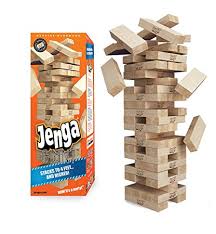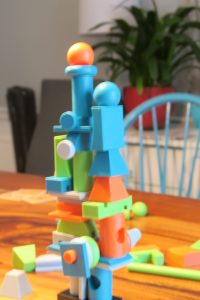Why Your Game Needs to Stand Out (and How to Make Sure it Does)
The world of board games is a competitive space. There are literally thousands of new games being introduced each year, which are also competing with the tens of thousands of games already in existence.
So how do you make sure that your game gets seen in such a crowded space?
You need to make sure there’s something unique about your game.
If you’re making a worker placement game, don’t make it just like all the other placement games out there.
If you’re working on a deck builder, add to it something truly unique to make it different from all the others.
People don’t want to buy a game that’s just like another game out there with a slightly different theme or better art. Your game has to be compelling.
But it’s not necessarily about creating something completely out there that no one’s ever seen before. If you deviate completely from the familiar, your game may be too obscure for most people.
You want to find a good balance between something existing, something familiar, and something new.
When I was teaching game design and development at Laurier University, we played and discussed Jenga, which we followed up with Junk Art. I reflected that Jenga made use of building blocks, similar to those that children would play with. Junk Art then took it one further step by including different shapes and colours, along with a multitude of ways to play the game.


These games have both been very successful, by innovating on existing ideas and making them into something fresh and new.
I even had the opportunity to talk with Leslie Scott, the creator of Jenga, for the upcoming Board Game Design Virtual Summit. It was fun and interesting to dive into what made this game such a phenomenal success. You’ll want to check out what she had to say (along with all the other amazing guests).
But back to game design… You want to make sure that your game isn’t just like every other one out there, perhaps with a new theme slapped on.
For example, I’m working with another designer on a worker placement game with some interesting twists. Now, I’ll preface this by saying worker replacement isn’t my favorite mechanic, but maybe I just haven’t found the right game for me. That could also be why we’ve thrown in some new twists. We’ve introduced the idea that the day is in phases that pass over time, and that you can only complete certain actions at different times of the day or night. As well, rather than directly claiming victory points for accomplishments, players have the choice of who they want to sell artifacts to, each with their own rewards and possible consequences.
You’ve got to make your game different. It could be through a really interesting unexplored theme, an innovative mechanic, unique components, or some combination of these.
Also, it really helps if your game has good table presence. In other words, something compelling about it that makes people stop when they see it and either want to learn more or play it right then and there.
I’ll write an upcoming article all about table presence in the near future.
In the meantime, what’s an interesting twist that you’ve added to your game to make it really stand out? What’s unique about it that will have publishers and gamers lining up to get a hold of it?

7 comments
DD O’Brien
I noticed my email of this article mentioned Barenpark iconography yet the web version is more concise but does not mention Barenpark. I figure it’s probably a ccopy/paste error- just thought I’d let you know, Joe.
Anyway, I want to give one of my designs (Smoke Rings) a neon/black-light reacticve look so folks notice it from a distance. What I’m considering is using a small UV light aimed at the table to highlight the game in a trippy way. Is this too much? Since the game (if ever published) wouldn’t come with a “blacklight” I feel it just may seem like a gimic.
Joe Slack
Hi DD! Thanks so much for catching that. I’ve re-sent the article, as the first section was from a previous article.
For your game, Smoke Rings, your idea does sound like it could entice people to play your game, however, as you pointed out, if the game doesn’t come with this “blacklight” then they may feel like it was a gimmick.
Marco Filipuzzi
Hi Joe, let me start with saying that you have some, in my opinion, of the most usefull material online on board game design. We are currently thinking of going to Kickstarter/Gamefound with a board game. Reading through your articles our ideas are way clearer now on how to proceeed, but we still struggle on how to produce some sample copies that should have a similar quality to the final one to be sent to reviewers, bring to meet ups etc…namely the phase after prototyping and before going for full production (that will be possible only after a successfull crowdfounding campain). Can you give us an idea how to handle that? …and I know that this will strongly dependo on many factors, but what number of sample copies do you suggest to go for: closer to 5 or to 50?
Joe Slack
Thank you kindly, Marco! I really appreciate it.
So, one option for creating great prototypes is using a company that specializes in this: The Game Crafter, Print and Play by Admagic, or Boardgamesmaker. If you’re just looking for cards, Drive Thru Cards and Printer Studio are other good options.
The other option is to ask the manufacturer you are going to be working with to produce a sample copy (or multiple sample copies). These will likely be truer to the final version but will definitely be more costly.
You probably want a couple of copies for yourself for demoing, recoding videos, etc. and one for every reviewer or previewer you plan to work with. You can get away with less copies of you get them prototypes early and arrange for them to send these on to others as well. So, probably in the 5-10 range, but this depends on your reviewers and timing.
Just make sure your game is finalized (or nearly so) before getting them done. Re-doing prototypes is expensive.
If you’re looking for this many copies, the first option above is likely best if they can provide you with everything you need.
Finding your niche – The Board Game Design Course
[…] I spoke a bit about this in my previous articles Why Table Presence Matters and Why Your Game Needs to Stand Out (and How to Make Sure it Does). […]
Courtney Laschkewitsch
This is a really great article! I love the examples and the way you framed it. Thank you!
Joe Slack
Thanks, Courtney!